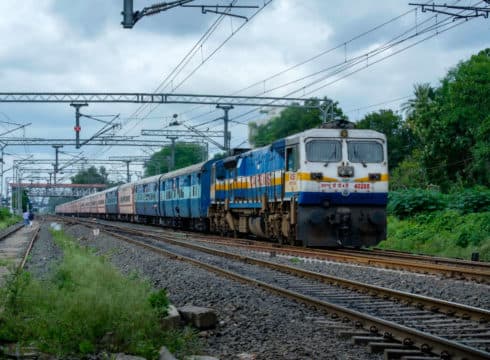Cabinet Committee on Economic Affairs (CCEA) approved the complete electrification of railways network
MoU covers energy planning according to government policies
Over 1.4 Mn passengers use Indian railways every day
Inc42 Daily Brief
Stay Ahead With Daily News & Analysis on India’s Tech & Startup Economy
Indian Railways has now taken a big step towards ensuring sustainability in its operations by confirming plans for electrifying the railway network in a bid to reduce its carbon footprint. For this, the Ministry of Railways has signed a memorandum of understanding (MoU) with the Department for International Development (DFID) in the UK.
Recently, the Cabinet Committee on Economic Affairs (CCEA) approved the complete electrification of the rail network to meet this objective. DFID and the ministry will work together to achieve energy efficiency and self-sufficiency for Indian Railways.
The MoU covers energy planning according to government policies, which include moving towards 100% greener electricity sources. It also aims to promote energy-efficient practises, fuel efficiency and other sustainable energy initiatives.
The two organisations will also plan for the deployment of electric vehicle charging infrastructure and battery-powered shunting locomotives. The MoU also covers training programmes and industrial visits. In a media statement, the ministry of railways said, “The collaboration of Indian Railways with DFID, United Kingdom will go a long way in ensuring self-sufficiency and efficiency in terms of energy and greener Indian Railways.”
It is to be noted that Indian railways began electrification process in the late 1950s, to cope with increased traffic. The government aimed that by 2019-20, 7,000 km route will be electrified, while in 2020-2021 and the next year, the target was of 10,500 km route each. Between 2017-19, the government has electrified 5476 rkm (railway kilometre), bringing electrified route to 35,488 rkm.
Indian Railways Goes Modern
Piyush Goyal, minister of railways, recently told the parliament that 844 Cr passengers traveled in trains in 2018-19. Further he said that Indian Railways has planned to source about 1000 Mega Watt (MW) Solar Power and about 200 MW of wind power progressively by 2021-22. 201 MW (98 MW solar and 103 MW wind power) has already been set up till October 31, 2019.
Over 1.4 Mn passengers use the Indian railway service every day, with over 71.42% of the tickets booked online. Recently, online ticket booking arm of Railways, IRCTC, went public and its shares were oversubscribed 111.85 times. The company claims to have a transaction volume of more than 25 Mn per month and 7.2 Mn logins per day and about 800K tickets booked every day through IRCTC website and Rail Connect.
The Indian Railways has been planning several revamp plans. For instance, Railway Minister Piyush Goyal recently said that the government plans to bring 6.5K railway stations online through WiFi connections. The ministry has also expressed its intention to install CCTV cameras at the stations. At present, 5K stations across India are already equipped with WiFi facility.
Further, NITI Aayog is pushing for a comprehensive plan for the holistic development of the area around 50 railway stations with the biggest potential to draw private investments. The model of the redevelopment of railway stations has been drawn from the example of privatisation of six airports in the country. It was reported that the cost of holistic development of railway stations in metro cities in India is pegged at about INR 10K Cr, while in Tier 2 cities, it is said to be between INR 3K Cr and INR 4K Cr.
The modernisation of Indian railways was a part of BJP’s 2019 manifesto for Lok Sabha elections and it looks like the government is in full mood to complete the ambitious project leveraging private partnerships.
{{#name}}{{name}}{{/name}}{{^name}}-{{/name}}
{{#description}}{{description}}...{{/description}}{{^description}}-{{/description}}
Note: We at Inc42 take our ethics very seriously. More information about it can be found here.


